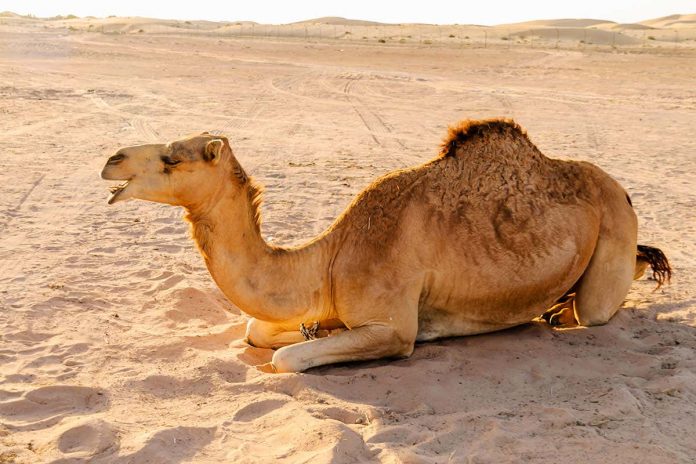[ad_1]

Stephen Barnes/Animals/Alamy
A thin gel layer that mimics camel fur could help insulate objects, potentially keeping them cool for days, without electricity.
Researchers have long been interested in hydrogels, which can absorb water and then release it through evaporation to produce a passive cooling effect without power. But a key challenge has been in finding ways to make this effect last longer.
Jeffrey Grossman at the Massachusetts Institute of Technology and his colleagues looked to camels for inspiration by combining hydrogel with a thin layer of another gel – aerogel – which is a light, porous insulating material.
Advertisement
“Our evaporation-insulation bilayer mimics the camels,” says Grossman.
The hydrogel layer is like the camel’s sweat gland, allowing water to evaporate and provide a cooling effect, whereas the aerogel layer plays the same role as the camel’s fur, he says, providing crucial insulation to keep out heat from the surroundings, while still allowing water from the hydrogel to escape through it.
“We achieve evaporation and insulation at the same time, extending the cooling period significantly,” says Grossman. Altogether, the gel bilayer is about 10 millimetres thick.
The researchers tested their double-layered gel in a temperature and humidity controlled chamber in the laboratory. It was able to cool an object to 7°C below the surrounding temperature, while also keeping it cool for longer compared with a single hydrogel layer.
The team found that, compared with the hydrogel layer alone, the addition of the aerogel layer resulted in an effective cooling time five times as long. “This translates to over 250 hours of cooling,” says Grossman – equivalent to about 10 days.
“We are working on making the materials more scalable to pave the way for wider adoption of this technology,” says Grossman. He says the gel bilayer could have applications in keeping food or medical supplies cool, as well as helping cool buildings to reduce their energy consumption.
Journal reference: Joule, DOI: 10.1016/j.joule.2020.10.005
More on these topics:
[ad_2]
Source link











